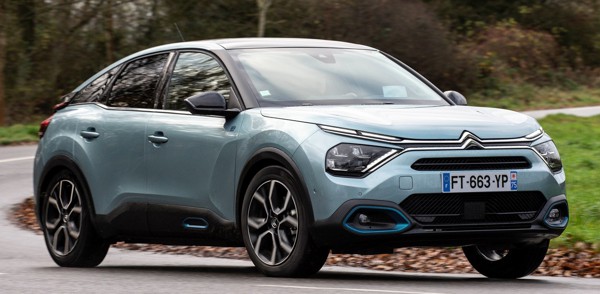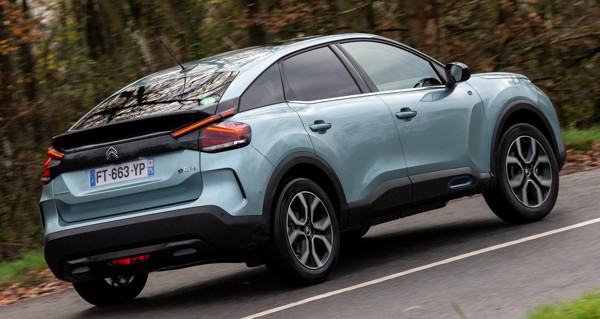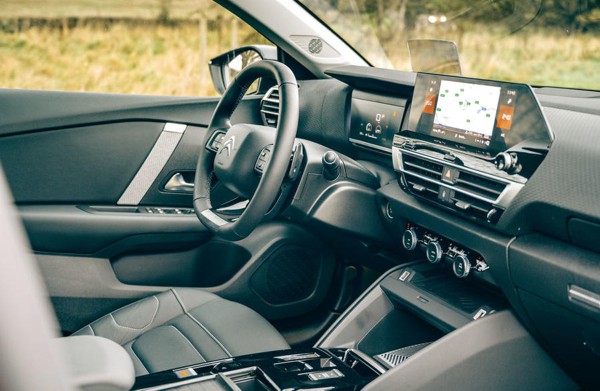Published
on 5
Feb 2021
|
All rights reserved.
|
|
|

|
|
Citroen
turns to crossover styling to save the C4 nameplate.
|
|
Citroen claimed it sold
12.5 million units of C4’s predecessors. Sounds remarkable, but that
number spans across 92 years, from the very first C4 launched in 1928
to Ami 6, GS, BX (was it a C-segment car?), ZX, Xsara, the last 2
generations C4 and C4 Cactus. If we consider only the last 3, they sold
3.4 million copies in 16 years, averaging 200,000 units annually. For a
mainstream C-segment family hatch, that number is not exactly
impressive.
C-segment is a huge but also competitive market segment, no matter in
Europe or globally. Built in France, the C4 has no cost advantage over
rivals coming from Korea, Czech Republic or Romania. It can’t match
German cars for quality or technology either. Traditionally, Citroen
stands out for innovation and design, but the last C4 had none of them.
No wonder it fell out of market favour. To some extent, C4 Cactus
recaptured the spirit of old Citroen. Unfortunately, its mold-breaking
styling was probably too radical for mainstream buyers.
To replace both C4 and C4 Cactus, Citroen thought hard how to capture
the hearts of motorists again. The brand’s core values of comfort, ease
of use and affordable pricing have to be retained, so styling becomes
all the more important. Citroen decided to take on the market trend
towards crossovers. The new C4 is deliberately styled to mimic a
coupe-SUV crossover. It has high ground clearance, large wheel arches,
big wheels (18-inch standard), high profile tires (60-section) and
tough-looking rubber claddings to appear ready for off-road use. To
avoid a bulky impression usually associated with crossover designs, it
opted for a fastback silhouette and 6 large windows (which has some
hints of the classic GS). As a result, it looks sportier and lighter.
Furthermore, Citroen’s complex surfacing treatment and unusual
headlights give the car a more sophisticated character.

|
|
The
fastback silhouette and 6 large windows are said to be inspired by GS,
despite 50 years separating them.
|
|
In spite of the crossover look, the C4 is by no means an SUV. It is
only 35mm taller than the old C4, and what’s underneath the sheet metal
is still strictly a front-wheel-drive family hatchback. Surprisingly,
it sits on PSA’s smaller CMP (Common Modular Platform), which is shared
with the B-segment Peugeot 208 and Opel Corsa, rather than the EMP2
platform that underpins Peugeot 308. However, Citroen supersizes it to
compete with any C-segment rivals – the wheelbase is stretched to 2670
mm, more than most C-segment cars actually. As a result, the cabin is
pretty spacious. 6-footers will fit both front and back, with good head
and legroom. Boot space is 380 liters, matching the latest Golf.
You sit higher than the case of usual hatchbacks, but not too much.
Visibility is good except rearward, as the rear screen is shallow. The
cabin looks modern, if not as special as the C4 Cactus. Most plastics
are hard but nicely textured such that they don’t appear cheap. The
digital instrument is small, obvious for cost reasons. The center
touchscreen is larger and responds quickly, but the graphics look too
plain. On the plus side, Citroen retains the rotary controls for
air-con. The well-padded seats are comfy yet supportive, probably the
best feature of the cabin.
On the dynamics side, the C4 focuses on comfort as well. Its suspension
setting is soft, accompanied with standard fitment of PHC (Progress
Hydraulic Cushion) hydraulic bump stop, ride comfort is remarkable.
Bumps and pot holes are well absorbed, returning a supple ride,
especially at low speed in town. Press harder, it fails to contain body
motion. The flipside of soft suspension setting is a lot of body roll
in corners and understeer sets in early. Coupling to the light and numb
steering, it offers little joy to keen drivers.

|
|
Cabin
is modern and surprisingly spacious, considering it is built on the CMP.
|
|
Citroen’s engine range is no different from Peugeot. Most buyers will
opt for the same 1.2-liter PureTech 3-cylinder turbo, just in different
state of tune – 100hp, 130hp or 155hp. Fewer will choose the more
expensive (and dying) 1.6 HDi diesel with 110 or 130hp. The sweet spot
is the 130hp PureTech, which offers enough punch, flexibility and
refinement in normal driving. Cruising on highway, the 3-pot engine
slips into the background, leaving some wind and tire noises to stand
in the way of ultimate refinement. After all, CMP is a small car
platform, not supposed to deliver big car refinement like EMP2.
However, one benefit of CMP is the availability of pure electric
version. The resultant e-C4 shares the same front-mounted 136 hp
electric motor with e-208 and e-Corsa, ditto the 50kWh battery that is
placed under the front and rear seats. It is a cost-effective way to
electrify the C4, as the car can be built on the same production line
as the regular C4s. In contrast, Volkswagen needs a new platform and
new factories to build its ID.3. On the downside, the motor and battery
designed for PSA’s small cars seem marginal for the use on a C-segment
car. Although the e-C4 feels quicker in town than its 0-60 time of 9.1
seconds suggested, it is by no means quick. Moreover, driving range
drops to 350km (217 miles), and probably even shorter in the real
world. That falls short of the standard set by ID.3 (420km for the
mid-range 58kWh battery), Hyundai Kona (449km for 68kWh) or Kia e-Niro
(455km for 68kWh). Fortunately, the Citroen is compatible with 100kW
charging, so you can charge it to 80 percent in merely 30 minutes
should you found such a charging station. Besides, despite the
additional 300kg it carries, the e-C4 doesn’t drive remarkably inferior
to the regular C4. The extra weight is compensated with instant torque
(192 lbft right from start up) and a lower center of gravity.
Overall, the new C4 is certainly more interesting than the old C4,
while being larger, more comfortable and practical than the C4 Cactus.
It is a nice attempt to capture the fever of crossover to save the
conventional hatchback segment. Whether it will succeed we need to wait
and see.
|
Verdict:    |
|